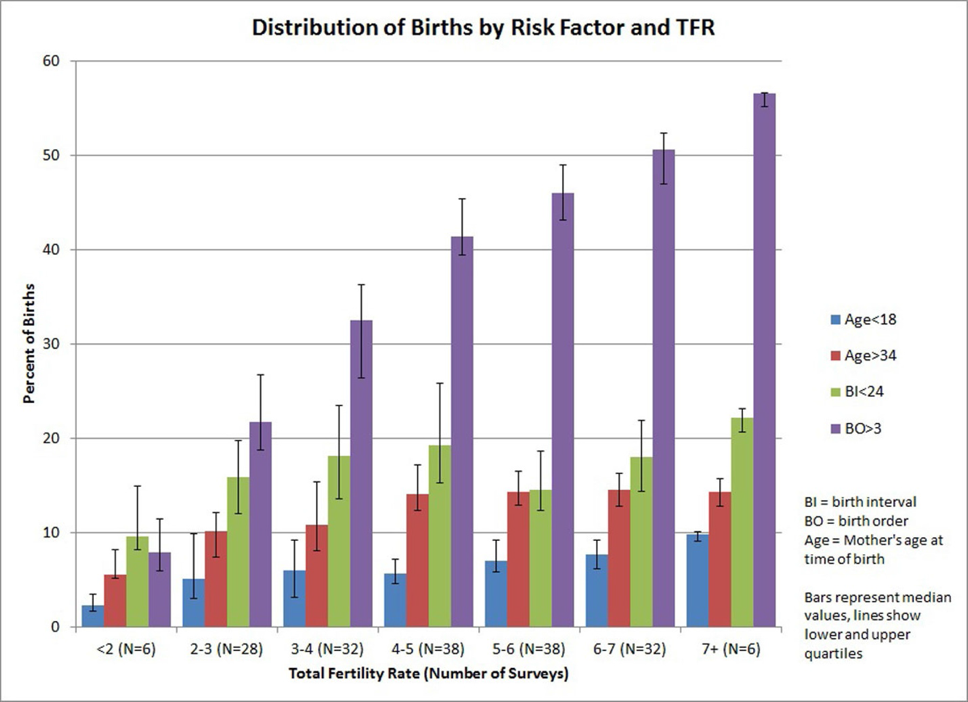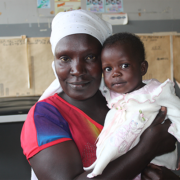Family Planning Saves Women’s Lives
Post by Maureen Norton, Senior Technical Adviser, Office of Population and Reproductive Health, Bureau for Global Health, United States Agency for International Development
Studies show that women who conceive at age 35 or above, or who experience five or more births, are at increased risk of maternal death.1 Family planning can prevent such high-risk advanced maternal age (AMA) and high-parity (HP) pregnancies and save women’s lives.
One study concluded that, “over one million maternal deaths were averted between 1990 and 2005 because the fertility rate in developing countries declined….By reducing demographically high-risk births, in particular, high-parity births, family planning reduced the MMR…” (Maternal Mortality Ratio).1

J Stover and J Ross, 2013, Changes in the distribution of high-risk births associated with changes in contraceptive prevalence, BMC Public Health, 13 (Suppl 3): S4
HP and AMA women constitute 50 to 75 percent of the potential client base in USAID high-fertility countries, as shown in the graph. USAID’s Health Communication Capacity Collaborative (HC3) has developed new counseling tools and educational materials to reach this group of women, and their families, to advise them of potential risks and complications, and offer guidance on healthy behaviors to avoid high-risk pregnancies.
Studies show that when women and their families are advised of the role of family planning in improving health outcomes, they are more likely to accept family planning.2 Thus the new HC3 Healthy Timing and Spacing of Pregnancy Implementation Kit (HTSP I-Kit) can play a significant role in informing women and families about healthy behaviors, including use of family planning, and contribute to accelerating reductions in maternal death. The I-Kit focuses specifically on addressing AMA and HP pregnancies to protect women’s lives.
Please join the HTSP I-Kit launch webinar on May 25, at 9:00-10:00 AM EST, to learn about these new tools, and their availability for use in your country.
[1] Stover J, J Ross, 2010, How increased contraceptive use has reduced maternal mortality, Maternal and Child Health Journal, Vol 14, Issue 5, 687-697.
[2] Cooper C et al, 2014, Findings from use of a narrative story and leaflet to influence shifts along the behavior change continuum toward postpartum contraceptive uptake in Sylhet District, Bangladesh, Patient Educ Couns, Dec 97 (3): 376-82; Ahmed, Saifuddin, et al, 2015, The effect of integrating family planning with a maternal and newborn health program on postpartum contraceptive use and optimal birth spacing in rural Bangladesh, Studies in Family Planning, Vol 46, Number 3, September, 297-312.








Leave a Reply
Want to join the discussion?Feel free to contribute!